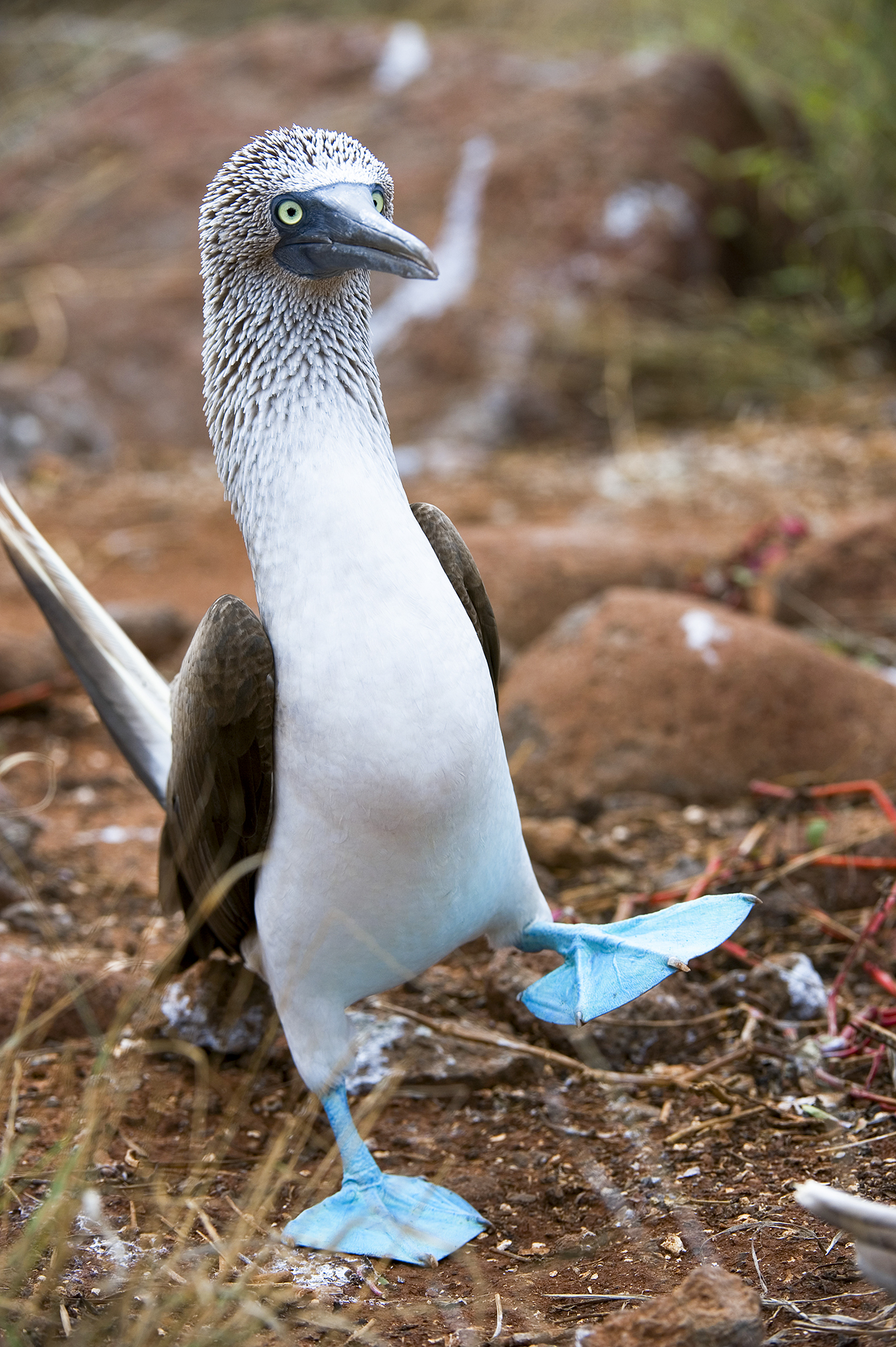
Sula nebouxii
TAXONOMY
Sula nebouxii, Milne-Edwards, 1882, Chile. Two subspecies
recognized, S. n. nebouxii Milne-Edwards, 1882 and S. n. excisa
Todd, 1948.
OTHER COMMON NAMES
French: Fou а pieds bleus; German: Blaufusstцlpel; Spanish:
Piquero Camanay.
PHYSICAL CHARACTERISTICS
29.9–33.1 in (76–84 cm); wingspan 59.8 in (152 cm). Upperparts
generally dark brown; underparts white. Distinctive blue
feet. Iris pale. Female averages larger. Race excisa appears
larger and paler.
DISTRIBUTION
Continental coasts of east Pacific Ocean, from northwest Mexico
in north to Peru in south (S. n. nebouxii) and Galбpagos Islands
(S. n. excisa).
HABITAT
Strictly marine. Frequents cool, rich waters in areas of upwelling,
often close inshore. Breeds along rocky coasts, on
cliffs and islets with little or no vegetation.
BEHAVIOR
Spectacular and elaborate pair-bonding displays, both aerial
and on ground, where blue feet play important role.
FEEDING ECOLOGY AND DIET
Active fisher, preying mostly on sardine (Sardinops), anchovy
(Engraulis), and mackerel (Scomber); also flying-fish (Exocoetus).
Highly gregarious, often feeds in quite large groups, plungediving
in unison. May fish with other species. Often feeds in
shallow water.
REPRODUCTIVE BIOLOGY
Not markedly seasonal. Usually nests on ground, sometimes
also on vegetation. Forms large colonies where nest is mere
circle of accumulated excreta around a slight depression.
Lays two eggs on average (one to three), which are incubated
for 41 days. Chicks fledge at 102 days and afterwards are
cared for 56 days on average. First breeds at two to three
years of age.
CONSERVATION STATUS
Not threatened. World population quite small but quite
abundant locally. Suffers predation from alien predators, at
least in Galбpagos. Most breeding sites currently protected.
SIGNIFICANCE TO HUMANS
Subject to exploitation for food in the past.
Photo Gallery of - Blue-footed booby
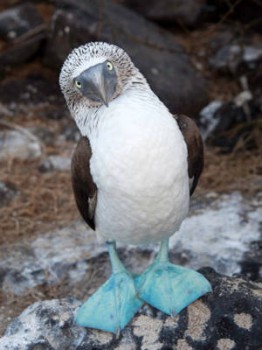
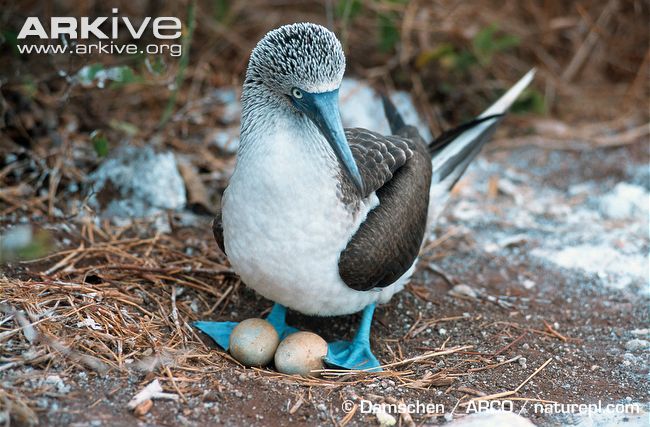
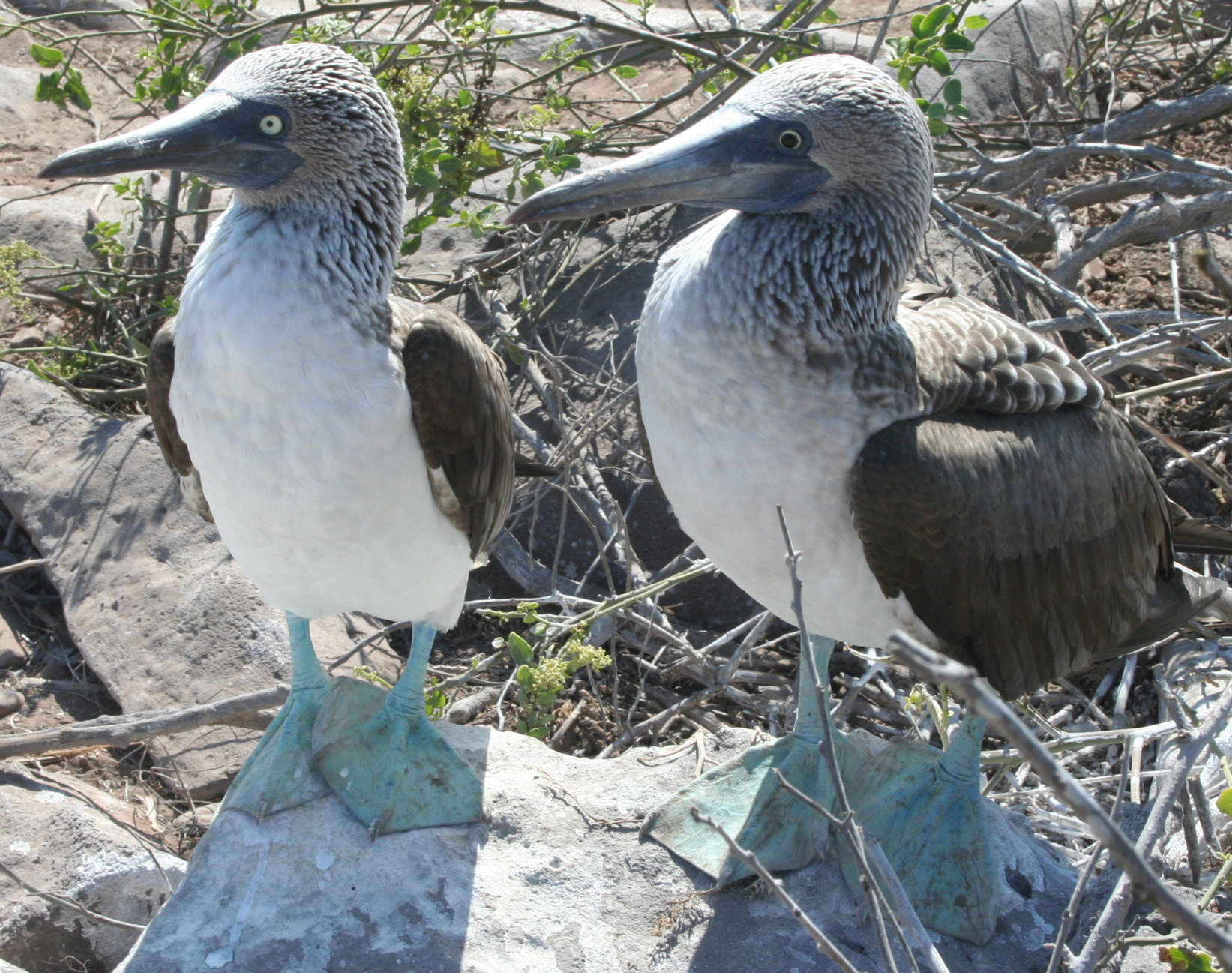
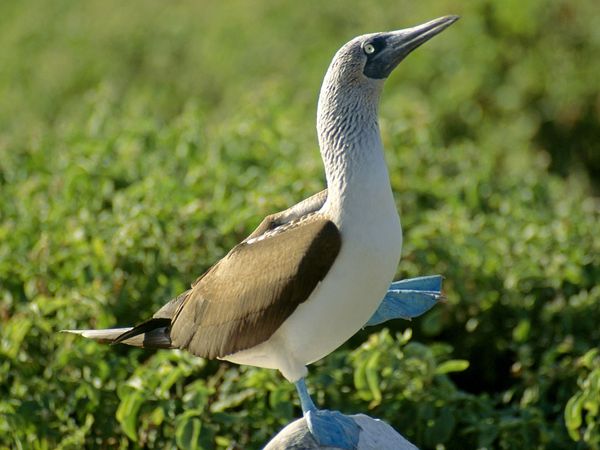
 Animalia Life
Animalia Life